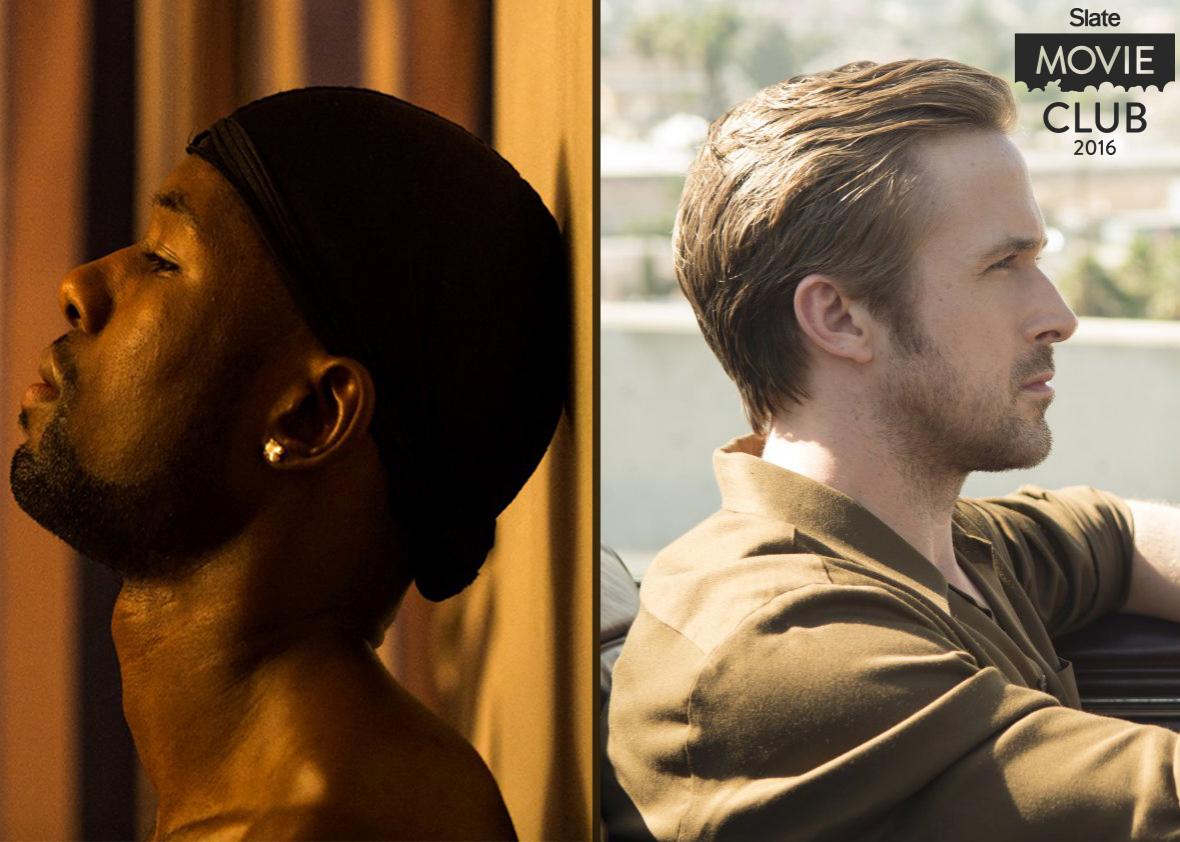Dear Bilge, Mark, and Amy,
I tend to associate Movie Club week with a mood of devil-may-care festivity that’s contiguous with the holiday season—glasses clinked around a table, ideas and wisecracks exchanged, opinions about the year’s films challenged, defended, and hopefully, every once in a while, changed. But this cold, dark January the mood is a few shades grimmer: Imagine that same spirit of camaraderie, but among a group of Mad Max–style survivors of some global cataclysm, huddled for warmth around a fire in an oil drum. What were the movies we saw in the Before Time, do you remember? What about them mattered enough to us that we should put it down here to preserve for the unimaginably mutated generations to come?
End-of-year roundups—the lists, the discussion groups, the awards conversations—are an artificial yet strangely satisfying way to locate meaning (that elusive bastard) in the fact that a certain set of films happened to come out between calendar dates A and B. Given the long and widely varying stretches of time over which each of these films might have been conceived, produced, and released (Martin Scorsese’s Silence, for example, has had a spot on its creator’s to-do list since Dan Kwan and Daniel Scheinert, the twentysomething directing team behind Swiss Army Man, were mere infants), it seems absurd to ascribe any perceived set of resemblances in the finished products to some flimsily defined 2016 zeitgeist. It wasn’t much of a year for making sense all around, as the failure of polls and common sense kept reminding us. But making meaning out of chaos, finding patterns in seemingly random fields of information, is what we were made to do as human beings and even more, God help us, as critics. So I ask you all, as we stand around the flickering oil-drum hearth and clap our hands together for warmth: What common themes or trends, if any, emerged to help you make sense of it all?
The only movie on which all four of our top 10 lists agree—and maybe the one that’s easiest to imagine coming to stand for the year in film as a whole—was Barry Jenkins’ raw, tender, stubbornly idiosyncratic gay love story Moonlight. Why, do you think, did that movie land so hard with audiences, earning a per-theater average on its opening weekend that was among the highest of the year and on the list of the top 25 of all time? Critics adored it, sure, but we all know that’s not enough to send ticket-buyers to theaters in droves. It surprises and heartens me that as the movie year draws to a close, Moonlight is not some underseen indie we’re earnestly badgering readers to seek out. On the contrary: Americans somehow sensed this was exactly the movie we needed this year, a year in which the live-streamed slaughter of Philando Castile at the hands of a Minnesota cop was not enough to drive home what should be the self-evident proposition that black lives matter. Moonlight wasn’t the only successful and well-regarded 2016 movie to take place in an entirely black American milieu, a world in which white people are not only not foregrounded, they’re scarcely visible. The No. 1 movie on Bilge’s list, Anna Rose Holmer’s microbudgeted coming-of-age story The Fits, also fits that bill (and does, in fact, count as one of those low-profile indies that’s worth urging audiences to find). But Moonlight’s commercial and critical success—the near-universal recognition of its hard-to-define specialness—was one of the cracks in the wall that allowed light (that liquid Miami moonlight) to shine into this sometimes pitch-dark year.
Finally, in order to give you some bones (mine) to pick over for the first round, I’ll observe that one commercially and critically successful movie on my top 10 list appears nowhere on any of yours: La La Land, a primary-colored widescreen musical that Amy, in her list, dismisses as “Damien Chazelle’s dancing show pony.” My feelings aren’t as fragile, nor my retaliatory capacities as fearsome, as the president-elect’s, so give it to me straight: Am I a full-on sucker for being so fond of this particular pony that I’ve now taken it out for three enjoyable rides? In the movie, after performing her one-woman-show monologue for her boyfriend, Emma Stone’s aspiring actress asks him anxiously, “Is it too nostalgic?” It’s a question that could just as easily be asked of Chazelle’s retro-styled pleasure delivery system, with its old-school shot transitions (iris out!) and quotations from Vincente Minnelli–era MGM dream ballets. Yet every time I watch it, there’s something bold and forward-looking about La La Land’s sheer cinematic audacity that strikes a spark of hope for the future of movies, in a year when hope of any stripe has become a precious commodity.
I hope I haven’t scared you all away from this year’s Movie Club by comparing it to a post-apocalyptic gathering around an oil drum. That’s just another way of saying that I need this conversation as much as I ever have, that I couldn’t imagine better companions to have it with, and that, even if there’s no virtual champagne on offer, you’re all welcome to partake of the more-or-less clean rainwater I’ve laboriously collected in this two-liter soda bottle with the top sawn off. Mark, as a film historian and industry analyst rather than a full-time critic, you didn’t publish a top 10 list this year, though you privately sent us around a list of 20 favorite titles. Looking over that, and over the year just passed, are there any hills you want to die on, arguments you care to settle, or praises you’ve been longing to sing from the rooftops?
Dana
